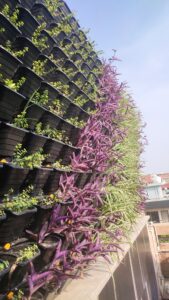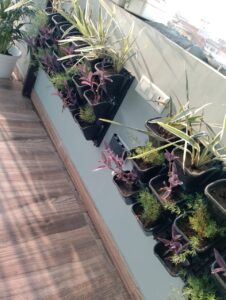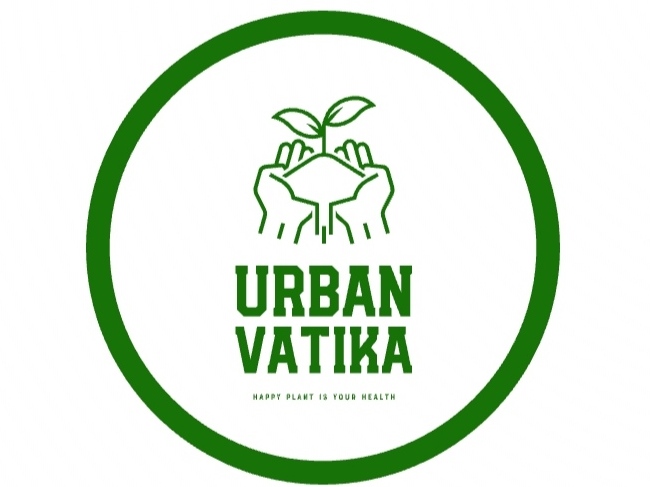Improve Your Health by Organic Vegetables
Vertical Garden
A garden that is grown vertically on a wall or other vertical surface is called a vertical garden, sometimes referred to as a green wall or living wall. These gardens come in a variety of forms and have many benefits. They can be made both indoors and outdoors.

Types of Vertical Gardens:
- Green Wall Systems: These are typically modular systems with pockets or panels that can be attached to walls. Plants are grown in these pockets or containers, and irrigation systems are often integrated.
- Vine-Covered Trellises: In this type, climbing plants like ivy or bougainvillea are trained to grow vertically on a trellis or framework attached to a wall.
- Hydroponic Systems: Hydroponic vertical gardens use a soilless growing medium and a nutrient-rich water solution to cultivate plants. These systems are highly efficient and can be used in limited spaces.
- Pocket Planters: These are small, pocket-like containers or pouches that are attached to a frame or hung on a wall. Each pocket can hold a different plant.
Advantages of Vertical Gardens:
- Space Efficiency: Vertical gardens are excellent for maximizing the use of limited space, making them ideal for urban environments or

Vertical Garden small gardens.
- Improved Air Quality: They can help improve air quality by filtering pollutants and producing oxygen.
- Aesthetic Appeal: Vertical gardens can enhance the visual appeal of a space, creating a lush and attractive environment.
- Sound Insulation: Depending on the density of plants, they can help absorb and reduce noise, acting as a natural sound barrier.
- Temperature Regulation: Green walls can help moderate indoor and outdoor temperatures, providing insulation in cold weather and cooling in hot weather.
- Biodiversity: Vertical gardens can provide a habitat for birds and insects, contributing to urban biodiversity.
- Reduced Energy Costs: By providing natural insulation, green walls can reduce the need for heating and cooling, potentially lowering energy costs.
- Stress Reduction: The presence of greenery has been shown to reduce stress and improve mental well-being.
- Food Production: Some vertical gardens can be used to grow herbs, vegetables, and even small fruits, providing a source of fresh produce.
- Low Maintenance: Many modern vertical garden systems include automated irrigation and can be relatively low-maintenance once established.
- Brand and Image Enhancement: Vertical gardens can be used for commercial and branding purposes, enhancing a company’s image or making a statement about environmental sustainability.
It’s worth noting that the success of a vertical garden depends on factors like plant selection, light conditions, and proper maintenance. Different types of vertical gardens have varying requirements, so it’s essential to choose the right system for your specific needs and space.

cheap louis vuitton laptop bags
Static Var Generator
Static Var Generator
cheap louis vuitton leopard scarf
cheap louis vuitton loafers
http://www.account.megedcare.com
OEM Good Wet Cat Food Factories
cheap louis vuitton leopard print scarf
Active Harmonic Filter
Static Var Generator
High-Quality Good Wet Cat Food Manufacturers
OEM Canned Kitten Food Supplier
cheap louis vuitton laptop bags on sale
China Good Wet Cat Food Suppliers
Active Harmonic Filter
High-Quality Canned Kitten Food Manufacturer
cheap replica louis vuitton bags
cheap replica louis vuitton belt
High-Quality University Robot Products, Manufacturer
Energy Storage System
High-Quality Vacuum Mop Combo Manufacturer, Companies
Static Var Generator
suplimedics.com
cheap replica louis vuitton belts for men
Custom Teleretail Robot Product, Manufacturers
Energy Storage System
Custom Agv In Logistics
Custom Mobile Robot Agv Manufacturers, Products
Active Harmonic Filter
cheap replica louis vuitton belts
cheap replica louis vuitton backpack
Energy Storage System